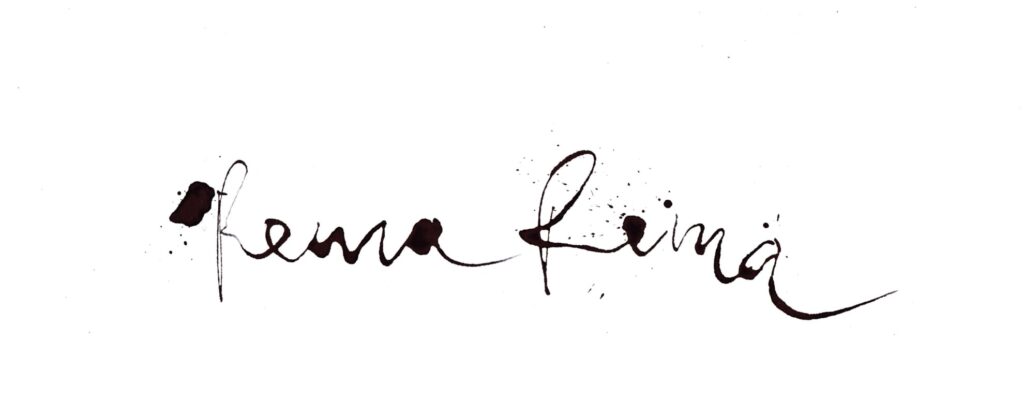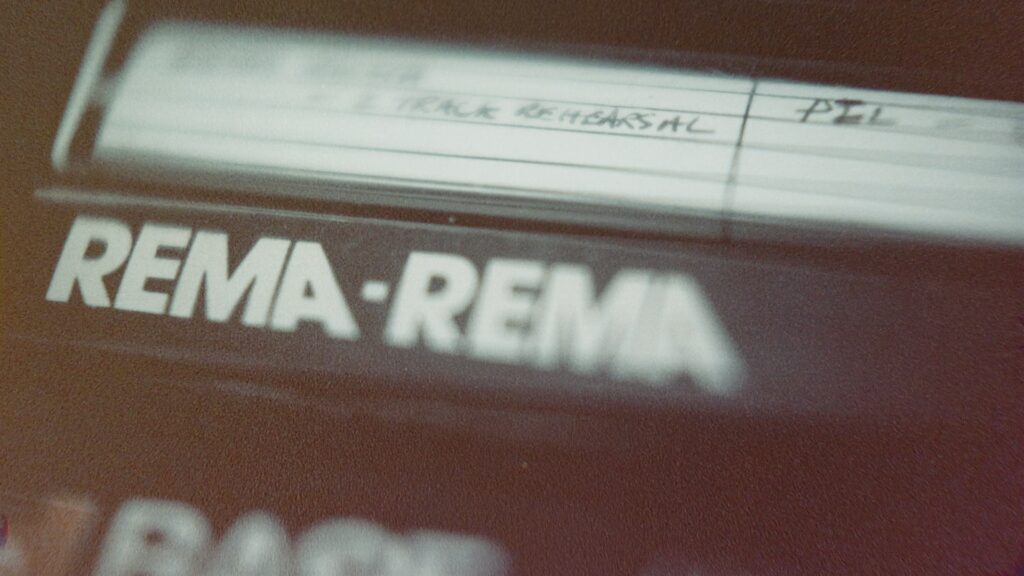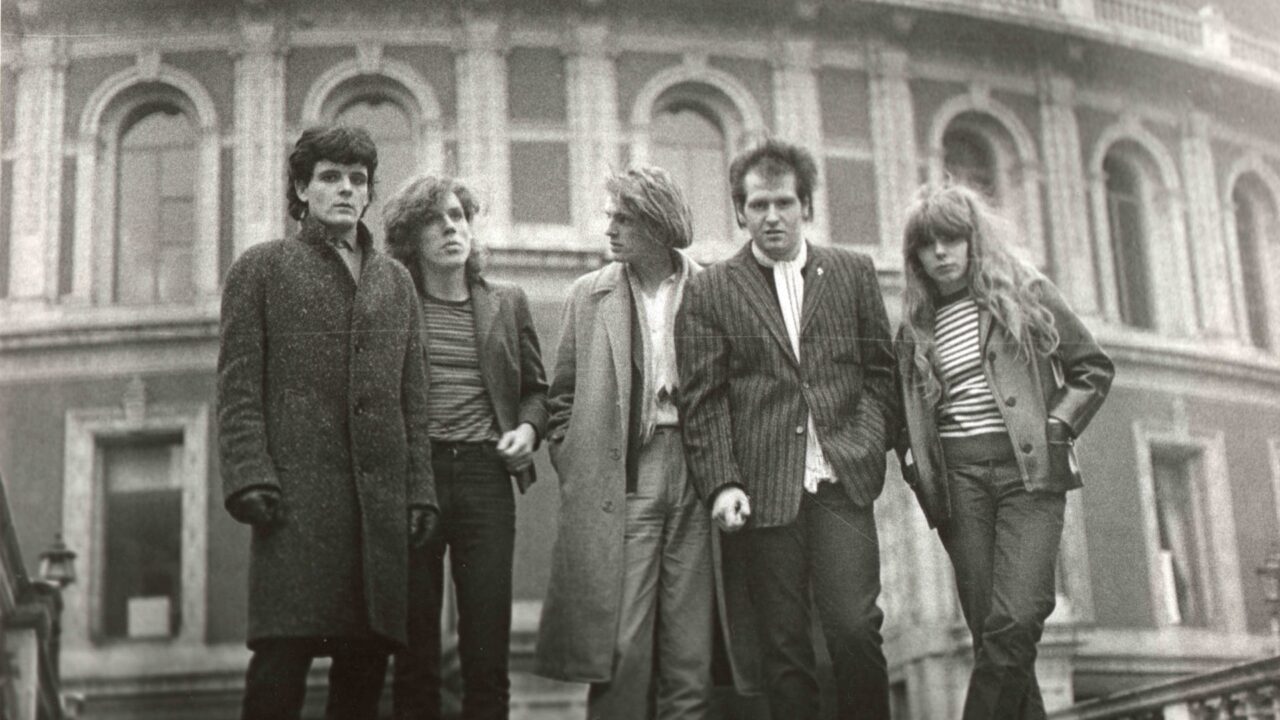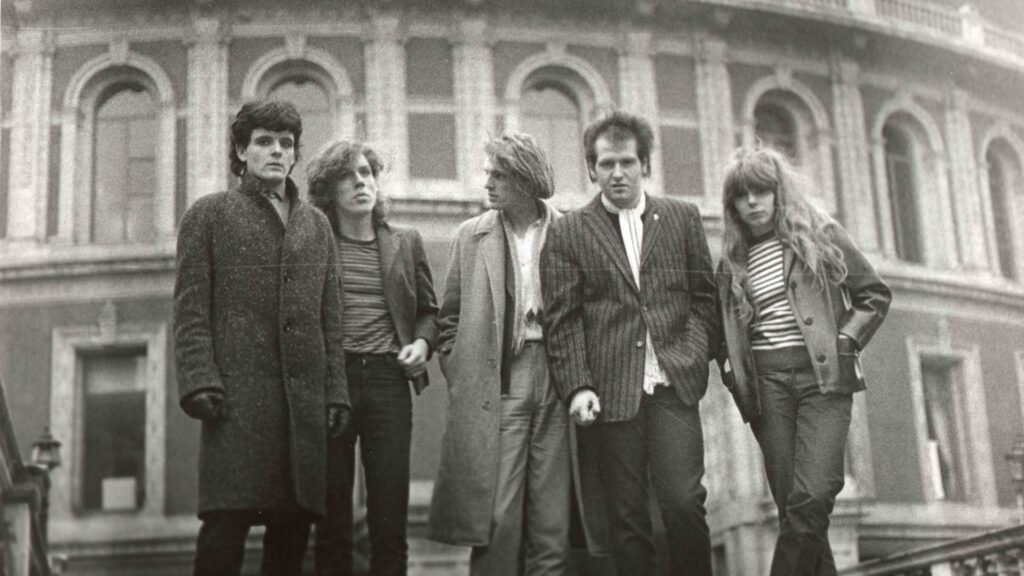
Until 2019, the sole recorded evidence of the short-lived London quintet Rema-Rema was a 4-song, 12” EP released by iconic label 4AD. (BAD 5, for those taking notes.) Wrapped in a striking George Rodger photo of Korongo Nuba tribesmen, Wheel in the Roses grabs you by the lapels with “Feedback Song,” which opens with a chorus of voices (no instruments) chanting the band’s name — this is the band as a gang, with a signature schoolyard chant.* At 30 seconds, the voices drop out, and a lone bass note booms out, setting an insistent rhythm met 45 seconds later by a skeletal drum pattern filling in the wide-open space. A clarion-call synth snakes through, then ringing feedback. The feral vocals return at the 3-minute mark, sailing over the grinding backdrop with staccato insistence. Each band member gets their introduction before the song builds up to a weird, gripping groove that’s as bracing now as it was in 1980, when it served as Exhibit A for a promising band with an ignominious end.
While the EP made an impression, it was a somewhat mysterious object, and the band members were relatively unknown. But they would soon make their mark on other projects: Bassist and singer Michael Allen would go on to form Mass with co-lyricist/guitarist Gary Asquith (who himself went on to form Renegade Soundwave with Danny Briottet); guitarist Marco Pirroni would make a name for himself with New Romantic superstars Adam & the Ants; drummer Max (Dorothy Max Prior) spent time in Psychic TV before shifting into performance and dance. And synth player Mark Cox would join Allen and Asquith in Mass before helping Allen co-found the long-running 4AD band Wolfgang Press. (Cox also worked with 4AD house “band” This Mortal Coil, including re-recording the Rema-Rema song “Fond Affections” for It’ll End in Tears in 1984.)
Wheel in the Roses might have stayed a relatively obscure object had Gary Asquith not decided to dig deep into the band’s archives. 4AD released this debut LP as Fond Reflections in 2019, thus giving a band that ended in 1980 a second life 40 years later. Inspired, filmmaker Marco Porsia (Swans: Where Does a Body End?) had the crazy idea to make a documentary, What You Could Not Visualise, that will have its European premiere at the seeyousound Festival in Turin on February 26. Gary Asquith and Mick Allen will perform Wheel in the Roses with the Italian band Larsen.
Porsia discovered Rema-Rema when he was 17 or 18, when “music forms you.” He continues: “And discovering that record, even throughout the years, I still thought maybe the only one who had it or knew about it. And so it was always such a special record.”
One of the major delights of Porsia’s documentary is discovering that he wasn’t alone: Rema-Rema’s lone EP enraptured musicians in different pockets of the world, from Germany’s Malaria! (“there’s this band that sounds like you!”) to Chris Connelly in Edinburgh, John Robb and Jim Thirlwell in London, and Steve Albini, Bruce Pavitt, and Frankie Nardiello in Chicago.
“A lot of punk was old rock n’ roll, sped up, and what we needed to do was deconstruct it.”
JOHN ROBB
In addition to telling the band’s story, Porsia also traces the “big bang” that happened in the wake of punk’s first wave, outlining how post-punk music distanced itself from the doctrinaire. John Robb shares an anecdote about how he and his friends would get a new record and play it obsessively, studying it closely as if trying to decode it. “A lot of punk was old rock n’ roll, sped up, and what we needed to do was deconstruct it.”
The film makes a case for Rema-Rema’s freshness and idiosyncratic take on punk. Mick Allen started in a conventional punk band called the Models, and the experience left him wanting to create something surreal, incisive, and raw — anything “rock” was out. The band began as an improvisatory 4-piece with a drum machine, but they soon placed an ad in Melody Maker: “Drummer wanted, 18-23. Into Kraftwerk, Can, Neu. No hi-hats. Call Marco.” Can-loving drummer Max answered; her love of drumming in stilettos meant no hi-hats. And like that, she was in the band.
Starting in the summer of 1978, the band would regularly descend the stairs into Halligan’s Heap, where they would play all night, often working without premeditation to see where it took them. (Favorite moments from these cassettes were then cleaned up and compiled by Gary and Takatsuna Mukai.) And their democratic approach yielded songs with enough weird detours and uncanny moments to make a distinct impression once they began playing live in January 1979. (Thirlwell saw them as many times as he could.)
Porsia started thinking seriously about a Rema-Rema documentary around the time the archive LP came out. “When I finished the Swans documentary and it was playing in festivals, I was itching to do another one right away, almost like you get a tattoo. I had to make another one. And for some reason I just kept thinking about Rema-Rema. I didn’t really let that bother me that there was no footage of them live. It was more of a challenge. And it’s always made the band so mythical in a way, you know?”
The band’s myth is intertwined with that of 4AD, and Porsia’s visual world-building accentuates the classic look and feel of the label’s early releases. Longtime 4AD designer Chris Bigg created the title sequence and calligraphic interstitial titles.
Bigg had no reservations about taking on the project: “The thing that really excited me was that someone … had the vision and commitment to make a film.”
“Way before this film, I always described Rema-Rema as a ‘super group in reverse’! The creative talent among those 5 musicians is a wonder.”
DESIGNER CHRIS BIGG
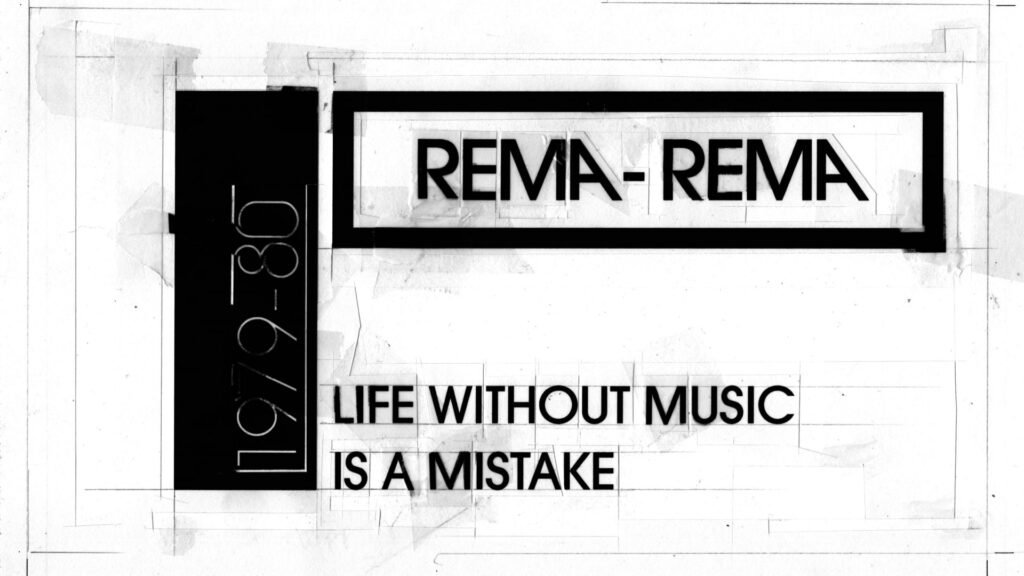
In many respects, the project also took Bigg’s history with 4AD full circle, allowing him to work with a band that had taken on legendary dimensions: “Way before this film, I always described Rema-Rema as a ‘super group in reverse’! The creative talent among those 5 musicians is a wonder,” he says. “As you know, I spent the best part of my creative life working with Mick and Mark, and later Andrew, for the Wolfgang Press. Such inspiring people — so driven and working within 4AD’s outer boundaries, never joining in or driven by what was happening around them.”
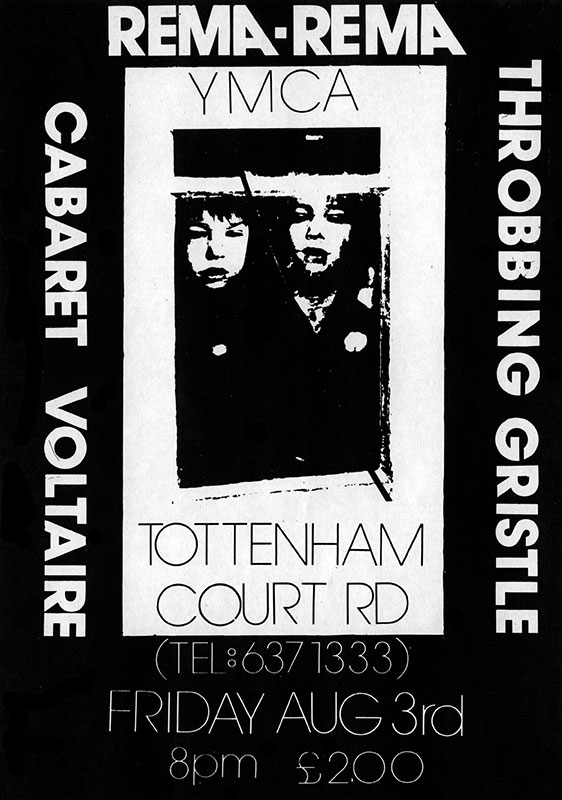
The austere graphics of the band’s black and white flyers made excellent use of Letraset, clip art and/or collaged elements, and dramatic negative space. Bigg used this stark approach as a jumping-off point for his conceptualization of the titles: “The Avant Garde font** was an essential starting point. My brief was to add atmosphere, calligraphic marks, and energy without taking away from the graphic language of the various flyers the band produced at the time.” He also loved the band portrait taken in front of Royal Albert Hall, used at the start of the film: “For a band that only played a handful of small venues, I liked the juxtaposition of them in front of that elegant, bloated venue!”
In keeping with the handmade feel, Bigg made all the type for his titles using analogue methods, “spacing each letter, gluing then taping down, then scanning in. This was a time-consuming approach, but essential to keep the DIY spirit of 1979-80.”
Bigg’s delicate, painstaking approach dovetails well with Porsia’s playful visual storytelling, which melds the absurd (a Frank Sinatra lookalike crooning “Fond Affections” after writer Mat Smith mentions its “torch song” quality) with the poignant (Belgian artist Ada Corneille’s 3-dimensional maquette of the band that is illuminated and animated during a sequence covering the band’s 11 live performances). He takes unexpected turns — I don’t think I have ever seen a music documentary that explores scent, synesthesia and the evocation of other senses as applied to a band, as this film does. (Perfumer James Elliott of Filigree & Shadow explains the specific inspirations for his fragrance, Rema.)
Although Marco Pirroni declined to appear in the film, the other 4 band members seem thrilled and deeply touched to revisit their band’s brief but fruitful existence. It’s a joyful coda, a what-could-have-been.
“There are a few different endings in the film,” Porsia explains. “I really wanted to try and get across about these [records as] kind of archeological discoveries. Steve Albini and Bruce Pavitt really helped expand the theme, how Rema Rema is just one of thousands of bands that were around that maybe didn’t even get a chance to record anything and are just lost to time. … There were other bands just like Rema-Rema everywhere in the world, creating really great music. Maybe they only did that one record, one single and were pretty much forgotten. I really wanted to show those examples in the film, because it relates to how important music is to all our lives. That’s why I use that quote as well at the end, ‘Life without music is a mistake.’” Gary’s response to the quote is perfect:“It’s like a life without soul.”
What You Could Not Visualise screens in Italy on Sunday, February 26, with more showings to come. Dorothy Max Prior’s fantastic memoir about her London life in music, art, and performance, 69 Exhibition Road, is out now from Strange Attractor Press.
*The chant was left off of the original pressing, but was restored in the 2019 reissue. **Designed by Herb Lubalin and Tom Carnase in 1970. Note: I use the Anglicized spelling of visualise in the title to match the film’s usage.
